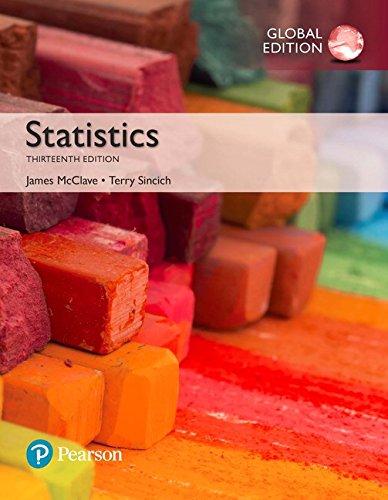Reality TV and cosmetic surgery. How much influence do the media, especially reality television programs, have on
Question:
Reality TV and cosmetic surgery. How much influence do the media, especially reality television programs, have on one’s decision to undergo cosmetic surgery? This was the question of interest to psychologists who published an article in Body Image: An International Journal of Research (Mar. 2010).
In the study, 170 college students answered questions about their impression of reality TV shows featuring cosmetic surgery, level of self-esteem, satisfaction with their own body, and desire to have cosmetic surgery to alter their body. The variables analyzed in the study were measured as follows:
DESIRE—scale ranging from 5 to 25, where the higher the value, the greater the interest in having cosmetic surgery;
GENDER—1 if male, 0 if female; SELFESTM—scale ranging from 4 to 40, where the higher the value, the greater the level of self-esteem; BODYSAT—scale ranging from 1 to 9, where the higher the value, the greater the satisfaction with one’s own body; and IMPREAL—scale ranging from 1 to 7, where the higher the value, the more one believes reality television shows featuring cosmetic surgery are realistic. The data for the study (simulated based on statistics reported in the journal article) are saved in the IMAGE file. Selected observations are listed in the table on p. 701. The psychologists used multiple regression to model desire to have cosmetic surgery (y) as a function of gender (x1), self-esteem (x2), body satisfaction (x3), and impression of reality TV (x4).
Student DESIRE GENDER SELFESTM BODYSAT IMPREAL 1 11 0 24 3 4 2 13 0 20 3 4 3 11 0 25 4 5 4 11 1 22 9 4 5 18 0 8 1 6 f f f f f f 166 18 0 25 3 5 167 13 0 26 4 5 168 9 1 13 5 6 169 14 0 20 3 2 170 6 1 27 8 3
a. Fit the first-order model, E1y2 = b0 + b1x1 + b2x2 +
b3x3 + b4x4, to the data. Give the least squares prediction equation.
b. Interpret the b-estimates in the words of the problem.
c. Is the overall model statistically useful for predicting desire to have cosmetic surgery? Test using a = .01.
d. Which statistic, R2 or R2a , is the preferred measure of model fit? Practically interpret the value of this statistic.
e. Conduct a test to determine whether desire to have cosmetic surgery decreases linearly as level of body satisfaction increases. Use a = .05.
f. Find a 95% confidence interval for b4. Practically interpret the result.
Step by Step Answer:






